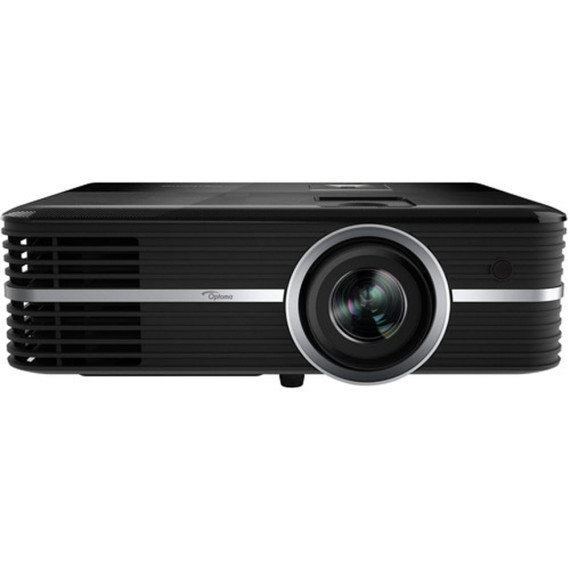Colin Dunn
I ordered this projector a few weeks ago and dropped it into my system. I was excited because this was the first projector to come to market that checks all the boxes for under $2,000. RGBRGB color wheel for accurate color reproduction? Check. Support for HDMI 2.0 / HDCP 2.2? Check. Support for viewing 3D Blu-ray content? Check. Enough brightness to use outside of a bat cave? Check. So finally, 4K arrived in my home theater. The first thing I observed is that it does have a fairly short throw and only a small degree of lens shift, so you will either have to ceiling-mount or coffee table mount. Focus is manual. No motorized "lens memory" features for fans of 2.35:1 constant image height setups. Shelf mounting at the back of the room is not likely to work in most installations. This projector uses the 0.47" DLP chip with pixel-shifting. However, pixels do not appear to overlap when viewed up close - you can actually see the "screen door" effect if you put your face right up next to the screen. Unlike in the days of 720p projectors, no screen door effect is visible at normal viewing distances. Seeing the "screen door" up close is desirable - it means pixel-shifting DLP works and can reproduce a true 3840x2160 image, in which every pixel is individually distinguishable. It also means the optics of the lens are good enough to render high-resolution images. After using a Panasonic PT-3000AU 3LCD projector for the last decade, this projector was a big upgrade. It throws a brighter, more vibrant image on my 120" screen. While no lamp-based projector can fully reproduce HDR content, I can say that 4K HDR content is noticeably clearer with more vibrant colors. The expanded color space of 4K HDR also made for very smooth gradients, with considerably less "banding" artifacts compared to 1080p Blu-ray on my old projector. The UHD51A uses an RGBRGB color wheel, which is best for home theater applications as it renders colors most accurately. Competing models that have higher lumen ratings (high 2000s to mid 3000s) use an RGBW wheel, but that extra brightness is lost when the projector is calibrated for accurate color reproduction. The RGBW wheel gives extra white lumens that can cut through ambient light, but I found the UHD51As RGBRGB wheel to be bright enough to illuminate a 120" 1.1-gain screen in my living room, which is not totally light-controlled. HDR is not rendered as well as on an OLED TV, but those are prohibitively expensive if you want a picture size over 65". The visual impact of a 120" picture is considerable. Black levels are not state of the art, but they are good enough. Its comparable to what you would experience if you went to a movie theater with digital projection. Projector users are familiar with these compromises; that aspect has not changed in the last decade. Like all the 0.47" DLPs on the market, this projector does have a "light border" that extends past the picture area, and even past the black borders on my screen. If this bothers you, paint your screen wall a flat black to reduce this effect. I do wish TI would fix this in the 0.47" DLP light engine. A projector should not project light outside the borders of the image. But again, all 0.47" DLPs have this issue currently, so consider it when setting up your theater. I didnt set up the Amazon Alexa features so cant comment on those. Also havent tried 3D yet, but am looking forward to watching a 3D movie on a 120" screen. This review may seem negative, as I pointed out some caveats and limitations. Its important to take these issues into account, and this projector may not work in every room. I did have to re-arrange my room to get this projector into my system, but it was worth the trouble. No one else offers a 4K + 3D projector for well under $2,000. It has given my theater a considerable boost in picture quality, and I finally get to enjoy 4K content the way it was meant to be seen. If, like me, you want both 4K UHD and 3D, this is the best bargain going currently.






















